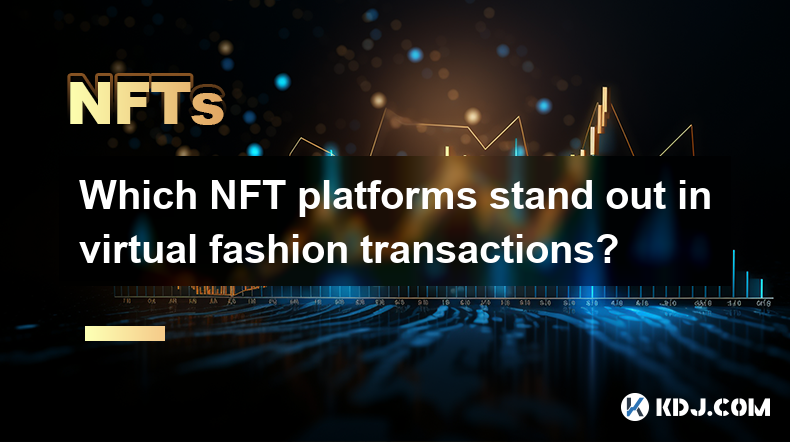-
 Bitcoin
Bitcoin $84,667.3339
1.45% -
 Ethereum
Ethereum $1,626.4546
2.31% -
 Tether USDt
Tether USDt $0.9999
0.02% -
 XRP
XRP $2.1322
1.13% -
 BNB
BNB $585.2728
0.33% -
 Solana
Solana $130.1410
1.97% -
 USDC
USDC $0.9999
0.01% -
 TRON
TRON $0.2517
-0.80% -
 Dogecoin
Dogecoin $0.1592
-1.83% -
 Cardano
Cardano $0.6368
0.10% -
 UNUS SED LEO
UNUS SED LEO $9.4019
0.48% -
 Avalanche
Avalanche $20.1491
3.44% -
 Chainlink
Chainlink $12.6591
0.82% -
 Stellar
Stellar $0.2407
1.38% -
 Toncoin
Toncoin $2.8875
2.76% -
 Sui
Sui $2.1935
-1.33% -
 Shiba Inu
Shiba Inu $0.0...01203
0.21% -
 Hedera
Hedera $0.1654
0.41% -
 Bitcoin Cash
Bitcoin Cash $324.3429
-5.41% -
 Litecoin
Litecoin $77.4065
-0.21% -
 Polkadot
Polkadot $3.6805
1.26% -
 Dai
Dai $0.9999
0.00% -
 Hyperliquid
Hyperliquid $15.8323
3.68% -
 Bitget Token
Bitget Token $4.3014
0.90% -
 Pi
Pi $0.7419
1.40% -
 Ethena USDe
Ethena USDe $0.9990
0.01% -
 Monero
Monero $214.9904
5.93% -
 Uniswap
Uniswap $5.3590
0.72% -
 OKB
OKB $52.1650
-1.34% -
 Pepe
Pepe $0.0...07344
1.73%
How do NFT Rarity Tools evaluate the uniqueness of NFTs?
NFT rarity tools use on-chain and off-chain data to score NFT uniqueness, but varying algorithms produce different results. Understanding a tool's methodology and considering community factors are crucial for accurate valuation, as rarity alone doesn't determine value.
Mar 03, 2025 at 07:48 am

Key Points:
- NFT rarity tools analyze various on-chain and off-chain data to assess the uniqueness of NFTs.
- Different tools employ different algorithms and weighting systems, leading to varying rarity scores.
- Understanding the methodology behind each tool is crucial for accurate interpretation of rarity rankings.
- Rarity is not the sole determinant of value; community perception and project hype also play significant roles.
- Transparency and verifiable data are essential for trustworthy rarity assessment.
How do NFT Rarity Tools Evaluate the Uniqueness of NFTs?
NFT rarity tools are algorithms designed to assess the relative scarcity and uniqueness of Non-Fungible Tokens within a specific collection. They analyze various characteristics of the NFTs, assigning scores that reflect their rarity compared to others in the same collection. These tools are invaluable for collectors seeking to identify potentially valuable or unique assets. However, it's crucial to understand their limitations and the methodologies employed.
Data Points Analyzed by Rarity Tools:
NFT rarity tools typically examine a range of attributes to determine rarity. These attributes can be broadly categorized into on-chain and off-chain data. On-chain data is directly visible on the blockchain, while off-chain data relies on external sources or metadata.
- On-Chain Data: This includes the token ID, traits associated with the NFT (e.g., color, background, accessories), and the number of NFTs within the collection sharing those specific traits. The frequency of each trait is a key factor in determining rarity.
- Off-Chain Data: This might involve community sentiment, historical sales data, or even external rankings from other platforms. While less objective than on-chain data, off-chain factors can significantly impact perceived rarity and market value.
Different Approaches to Rarity Scoring:
Various NFT rarity tools use different algorithms and weighting systems to calculate rarity scores. Some employ simple frequency analysis, where rarer traits receive higher scores. Others use more sophisticated statistical methods, such as Bayesian analysis or machine learning, to account for the interdependency of traits.
- Frequency-based scoring: This method simply counts the occurrences of each trait. The less frequent a trait, the higher its rarity score.
- Weighted scoring: This approach assigns different weights to different traits based on their perceived importance or desirability within the community.
- Statistical modeling: Advanced tools use statistical models to analyze the relationships between different traits and predict rarity more accurately. This considers how the combination of traits impacts overall uniqueness.
Interpreting Rarity Scores:
It's essential to understand that rarity scores generated by different tools can vary significantly. This is because each tool uses different algorithms, weighting systems, and data sets. A high score from one tool doesn't necessarily translate to a high score from another. Collectors should carefully examine the methodology of each tool before relying on its rarity assessments.
Limitations of NFT Rarity Tools:
While useful, NFT rarity tools have limitations. They primarily focus on objective data, often overlooking subjective factors that influence value. The perception of rarity can be influenced by external factors like community hype, artist reputation, or utility associated with the NFT. Rarity scores should be considered alongside these subjective elements.
Transparency and Verifiability:
The reliability of a rarity tool depends heavily on its transparency and verifiability. Reputable tools openly disclose their algorithms and data sources, allowing users to understand how rarity scores are calculated. This transparency fosters trust and allows for independent verification of the results. Lack of transparency should raise red flags.
Beyond Rarity: Factors Affecting NFT Value:
While rarity is a significant factor, it's not the sole determinant of an NFT's value. Other factors play crucial roles:
- Project hype: The overall excitement and community engagement surrounding a project can significantly inflate the value of its NFTs, regardless of rarity.
- Utility: NFTs with practical uses or access to exclusive content or experiences tend to hold more value than purely collectible ones.
- Artist reputation: NFTs created by well-known or established artists often command higher prices, regardless of their rarity score.
- Market demand: Supply and demand dynamics are fundamental to any market. High demand for a specific NFT, even if not the rarest, can drive its price up.
Step-by-Step Guide to Using NFT Rarity Tools:
- Choose a reputable rarity tool: Research different tools and compare their methodologies and transparency.
- Select the NFT collection: Input the collection's contract address into the tool.
- Analyze the rarity scores: Review the scores for individual NFTs within the collection.
- Consider other factors: Remember that rarity is just one factor affecting value. Assess community engagement, utility, and artist reputation.
- Cross-reference with other data: Compare the rarity scores from different tools to get a broader perspective.
Frequently Asked Questions:
Q: Are NFT rarity tools always accurate?
A: No, NFT rarity tools are not always perfectly accurate. They rely on available data and algorithms, which may not fully capture all aspects influencing value. Subjective factors like community sentiment and project hype also play a significant role.
Q: Can I use rarity tools to predict future NFT value?
A: No, rarity tools cannot reliably predict future NFT value. While rarity is a factor, market forces and external factors can significantly impact prices. Rarity tools should be viewed as one data point among many.
Q: How do I find a trustworthy NFT rarity tool?
A: Look for tools that are transparent about their methodologies, data sources, and algorithms. Check reviews and community feedback to assess their reputation and accuracy. Prioritize tools that use verifiable on-chain data.
Q: Do all NFT rarity tools use the same metrics?
A: No, different NFT rarity tools utilize different algorithms and weighting systems. This results in varying rarity scores for the same NFT across different platforms. It’s crucial to understand the methodology behind each tool.
Q: Is rarity the only factor determining NFT value?
A: Absolutely not. Rarity is a crucial factor, but other elements like project hype, utility, artist reputation, and market demand significantly influence NFT value. A rare NFT might not be valuable if there's no demand for it.
Disclaimer:info@kdj.com
The information provided is not trading advice. kdj.com does not assume any responsibility for any investments made based on the information provided in this article. Cryptocurrencies are highly volatile and it is highly recommended that you invest with caution after thorough research!
If you believe that the content used on this website infringes your copyright, please contact us immediately (info@kdj.com) and we will delete it promptly.
- Binance Rolls Out Futures With 75x Leverage for New Altcoin KERNEL
- 2025-04-15 07:50:13
- Partnerships, Programs, and Projects
- 2025-04-15 07:50:13
- Fusion+ feature integrated into EarnPark, enhancing the platform's swapping capabilities
- 2025-04-15 07:45:13
- Permanence DAO AMA
- 2025-04-15 07:45:13
- Troller Cat ($TCAT) Might Be the Next Pepe Coin Explosion. Here Are the Top Meme Coins to Watch
- 2025-04-15 07:40:13
- JPMorgan Has Added British Pound-Denominated Accounts to Its Blockchain-Based Payments Network
- 2025-04-15 07:40:13
Related knowledge

Which NFT platforms stand out in virtual fashion transactions?
Apr 15,2025 at 02:29am
In the dynamic world of cryptocurrency and digital assets, Non-Fungible Tokens (NFTs) have carved out a significant niche, particularly in the realm of virtual fashion. As the demand for unique digital wearables and accessories grows, several NFT platforms have emerged as leaders in facilitating these transactions. This article explores the standout NFT...

How does an NFT platform’s cross-chain trading support affect its ranking?
Apr 14,2025 at 04:49pm
The impact of an NFT platform's cross-chain trading support on its ranking is a multifaceted topic that delves into the technical capabilities, user experience, and market dynamics of the platform. Cross-chain trading refers to the ability of an NFT platform to facilitate the exchange of non-fungible tokens across different blockchain networks. This fea...

How does the quality of an NFT platform’s customer service affect its ranking?
Apr 15,2025 at 05:49am
The quality of an NFT platform's customer service plays a crucial role in determining its ranking within the competitive landscape of the cryptocurrency and NFT market. Customer service is often the bridge between a platform and its users, directly impacting user satisfaction, trust, and overall experience. This article delves into how different aspects...

Why are some NFT platforms more popular on social media?
Apr 15,2025 at 01:00am
The popularity of NFT platforms on social media can be attributed to a variety of factors that influence their visibility, engagement, and overall appeal to users. Understanding these factors can provide insights into why certain platforms capture more attention and interaction on social media channels. User Experience and InterfaceUser experience (UX) ...

How do an NFT platform’s environmental measures affect its ranking?
Apr 15,2025 at 02:14am
The impact of an NFT platform's environmental measures on its ranking is a topic of growing importance within the cryptocurrency circle. As the digital art and collectibles market grows, so does the scrutiny over the environmental footprint of the blockchain technologies that support these platforms. This article will delve into how these environmental ...

How can brand collaborations with NFT platforms improve their rankings?
Apr 15,2025 at 01:35am
Brand collaborations with NFT platforms have become increasingly popular in the cryptocurrency circle, offering a unique way to enhance visibility and rankings. By leveraging the strengths of both brands and NFT platforms, these collaborations can drive engagement, increase user base, and ultimately improve rankings on various metrics. In this article, ...

Which NFT platforms stand out in virtual fashion transactions?
Apr 15,2025 at 02:29am
In the dynamic world of cryptocurrency and digital assets, Non-Fungible Tokens (NFTs) have carved out a significant niche, particularly in the realm of virtual fashion. As the demand for unique digital wearables and accessories grows, several NFT platforms have emerged as leaders in facilitating these transactions. This article explores the standout NFT...

How does an NFT platform’s cross-chain trading support affect its ranking?
Apr 14,2025 at 04:49pm
The impact of an NFT platform's cross-chain trading support on its ranking is a multifaceted topic that delves into the technical capabilities, user experience, and market dynamics of the platform. Cross-chain trading refers to the ability of an NFT platform to facilitate the exchange of non-fungible tokens across different blockchain networks. This fea...

How does the quality of an NFT platform’s customer service affect its ranking?
Apr 15,2025 at 05:49am
The quality of an NFT platform's customer service plays a crucial role in determining its ranking within the competitive landscape of the cryptocurrency and NFT market. Customer service is often the bridge between a platform and its users, directly impacting user satisfaction, trust, and overall experience. This article delves into how different aspects...

Why are some NFT platforms more popular on social media?
Apr 15,2025 at 01:00am
The popularity of NFT platforms on social media can be attributed to a variety of factors that influence their visibility, engagement, and overall appeal to users. Understanding these factors can provide insights into why certain platforms capture more attention and interaction on social media channels. User Experience and InterfaceUser experience (UX) ...

How do an NFT platform’s environmental measures affect its ranking?
Apr 15,2025 at 02:14am
The impact of an NFT platform's environmental measures on its ranking is a topic of growing importance within the cryptocurrency circle. As the digital art and collectibles market grows, so does the scrutiny over the environmental footprint of the blockchain technologies that support these platforms. This article will delve into how these environmental ...

How can brand collaborations with NFT platforms improve their rankings?
Apr 15,2025 at 01:35am
Brand collaborations with NFT platforms have become increasingly popular in the cryptocurrency circle, offering a unique way to enhance visibility and rankings. By leveraging the strengths of both brands and NFT platforms, these collaborations can drive engagement, increase user base, and ultimately improve rankings on various metrics. In this article, ...
See all articles























































































